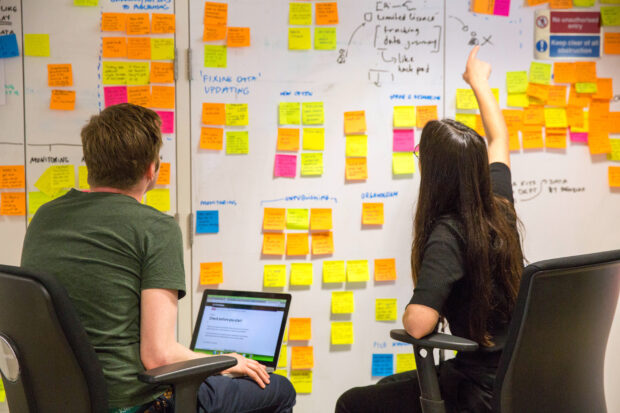
Service design is getting more and more attention in government at the moment, but many people still don’t understand what it is.
The most common question I hear – from people both inside and outside government – is: “Isn’t that just UX (user experience) design?”
Let’s be clear: service design and UX design are not the same, because a service is different from a user’s experience.
The definition of user experience
The user experience is how a user experiences a thing. Anything can affect this; from the usability of the interface to whether or not the user had breakfast that morning. The product team can never fully control a user’s experience, but everything that each of us does will contribute to it. We all have a responsibility to think about this.
In the private sector, UX designers are increasingly sought after. But UX isn’t one of the 4 types of designer we hire at GDS. This is because it’s the responsibility of the whole team – not one person.
It's also partly down to what we’re making. Private companies make products and services that they want people to remember and value, spend their money on, and keep coming back to.
Interactions with government are just something people have to do. They should be easy to use, but so easy that they’re actually forgettable.
The definition of a service
A service is everything that helps a user meet their need. That means all the bits the user sees, such as websites, letters and talking to people. It also means all the bits they don’t see, like casework, system maintenance and code.
All this is designed whilst understanding the wider context of the user journey – everything a person does between realising their need and solving it. That means that often the individual “service”, product, or feature that a team is working on is not actually the whole picture.
It’s a service designer’s job to understand that entire end-to-end journey and to simplify it for users.
It still starts with user needs
In practice this can mean questioning the scope of what’s being built or even, when we talk about service design in government, looking at how different departmental teams are structured.
Working with user researchers, we start by understanding the user needs. Working with other stakeholders we work out how we can reduce complexity in the overall service.
It’s a challenging job, but this is what we mean when we say do the hard work to make it simple.

6 comments
Comment by David posted on
Perhaps it's time to change the role and job title of 'Digital Service Manager' to simply 'Service Manager' so the focus is less on the digital element and more on the end-to-end service whatever channels it encompasses?
Comment by Sanjay Poyzer posted on
Yeah, I think that's more fitting in many cases. The digital bit is rarely the whole service.
Comment by Delan Bertinus posted on
Although I agree with the content with the article I disagree with the title. In Service Design UX is just one approach. It's a dependable and is not inter dependable. So it's not the same
Comment by Sanjay Poyzer posted on
Hi Delan, thanks for your comment.
The title is a question, which the content attempts to answer "no." So in other words, I disagree with the title too 🙂
Comment by Praveen posted on
Agree both are different roles.. however article just touched the surface of it. Imho in gds n other digital govt orgs designers operate at micro whereas service designers at macro level across a big whole service or programme level
Comment by Sanjay Poyzer posted on
Hi Praveen,
That certainly has been the case in the past, and largely still is. However there's definitely a shift towards service designers working at a higher level. We're doing a lot of work in GDS on how this works practically and will be writing lots more about it in the future.